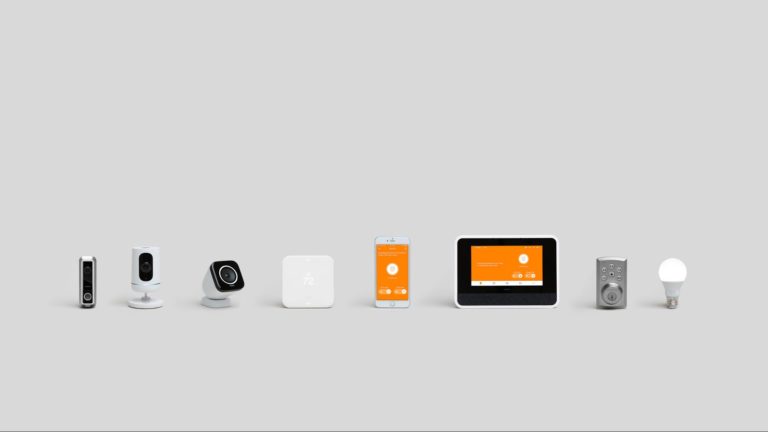We’ve rounded up figures for Vivint equipment, monitoring, and fees to give the most accurate cost estimate possible. (Hint: you’ll pay at least $30 a month for monitoring and at least $600 up front for equipment.) Let’s dive in! The equipment is unique to Vivint, which is nice in that you’re getting something special for your money. We’ve tried Vivint’s equipment, and pieces of it really impressed us, like the smart, unique Deter feature on the video doorbell. But because the equipment is proprietary, you likely won’t be able to get it monitored by another, cheaper security company when your Vivint commitment expires.
Key fob: $34.99 Door/window sensor: $50.00 Recessed door sensor: $34.99 Glass break detector: $100.00 Motion sensor: $100.00 Flood sensor: $69.99 Freeze sensor: $69.99 Tilt sensor: $34.99 Garage door controller: $99.00 Door lock/smart lock: $159.99 Carbon monoxide detector: $100.00 Smoke detector: $100.00 Element thermostat: $169.99 Nest L thermostat: $249.99 Nest E thermostat: $169.99 Appliance control module: $49.99 Lamp module: $50.00 Indoor camera: $199.99 Vivint Doorbell Camera Pro: $249.99 Vivint Outdoor Camera Pro: $299.99 Smart Drive: $249.99 Medical pendant: $34.99 Car Guard: $199.00
If you’re looking for Vivint Solar, that’s a whole other thing. There’s currently no way to combine a Vivint Solar subscription with a Vivint home security system subscription. The starter pack (a touchscreen panel, two door or window sensors, a water sensor, and a motion sensor) is $599. And, because most homes have more than one door or window, you’ll likely want to add some more devices to the starter kit. That all adds up to quite a bit of cash, especially when compared to DIY systems. Ring, SimpliSafe, and Abode each charge less than $300 for a starter kit with a similar equipment roster. They also charge less money to add extra devices, like additional sensors.
With the Smart Security plan, you can access the Vivint mobile app, but you can’t connect any home automation devices or security cameras. The Smart Home plan provides home automation access and support. That includes connectivity with things like smart locks and Nest thermostats. The Smart Home Video plan includes video support and recording. You can add up to six cameras to your system, as long as you pay $4.99 per month per additional camera. (The monthly costs for the first Vivint camera are already included in the plan.) If you choose to fill all six camera slots, you’ll pay a grand total of $69.94 every month for monitoring.
But if you finance instead of spending $600+ right out of the gate, you’ll pay Vivint back over an extended period. (Read: as many as five years.) And if you get tired of your system and want to break free, you first have to pay 100% of what you still owe on both equipment and monitoring. When you move, you can choose to get a little Vivint help, a lot of Vivint help, or start completely over with your home security system. You’ll then pay Vivint $129, which covers professional reinstallation plus the following new equipment:
4 door/window sensors 1 smoke detector, motion detector, or glass break sensor Up to 3 replacement door locks, thermostats, or doorbell cameras if you had them in your previous residence
You’re also welcome to buy more Vivint stuff during installation if you want something this deal doesn’t cover. Vivint recommends this partial DIY option if you have a small system of fewer than 10 products. If you have more than 10, the company recommends having its techs remove everything (the next option we’ll cover). Once you arrive at your new home, you’ll buy new equipment and start a new contract. (The other two options allow you to keep your existing contract length, prices, and terms.) If you still want a Vivint alarm after you move, we think the other two options are better deals. But if your current contract has run its course, or you want more updated and better equipment anyway, we can see how this might be an easier option. In short, if you just want security, period, you’ll find Vivint a little overpriced. But if you want a security company that takes care of all the tech setup and offers smart home automation, you may find that the premium price is worth it to you. If cost is your main concern, a Vivint security system wouldn’t be the right fit for you. Instead, we’d recommend going with a DIY alarm system for the best savings. If you’re on the fence, we suggest reading our Vivint review and our Vivint security cameras review.


